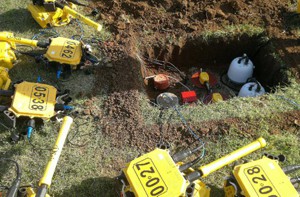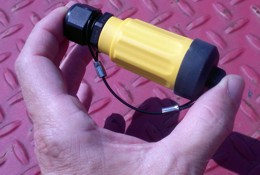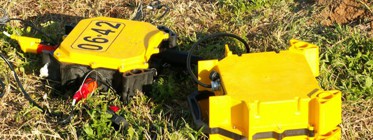Sigma Data Retrieval and Equipment Efficiency
 |
Continuous recording cableless systems have many benefits but potential drawbacks arise when there is inflexibility in data collection. |
|
The situation can be even worse for ground units which rely on internal batteries. It may only be possible to recharge such batteries when they are within certain temperature limits, further reducing use of equipment for data acquisition or affecting harvesting operations. |
|
Another method uses ruggedized USB memory attached to the auxiliary port of the SAU. On connection, the external memory takes a copy of the data as selected by an ASI file. Data is then copied from USB to Sigma processing computer. Lastly, Sigma also offers rack-based download as an option - though we are pleased to note that few bother to take us up on it. Any mixture of harvesting techniques can be used as software keeps track of what has been retrieved. Transfer speed is very fast, only being limited by the read-speed of the internal SAU memory. |
 |
|
Flexible data retrieval makes or breaks a cableless recording system. Only Sigma offers this range of harvesting options. Jerry Blaxton (Sigma user, June 2011): "The most impressive aspect of the experience processing data from Sigma is the inherent improvement in data quality by reducing human errors. This is accomplished by encoding all surface location data into the "headers" of the seismic traces. There are no "geometry" errors. Geometry errors are significant in that they cascade errors through the processing flow. Remove the errors and improve data quality. Furthermore, I have processed many lines with far less critical information available through a traditional OB report. This system significantly raises the confidence level for data integrity. The ease of inputting the individual recordings into my processing system was a welcome, pleasant phase. Sometimes, simply getting the data from field into a processing computer is fraught with troubles, not here, thankfully."
|


